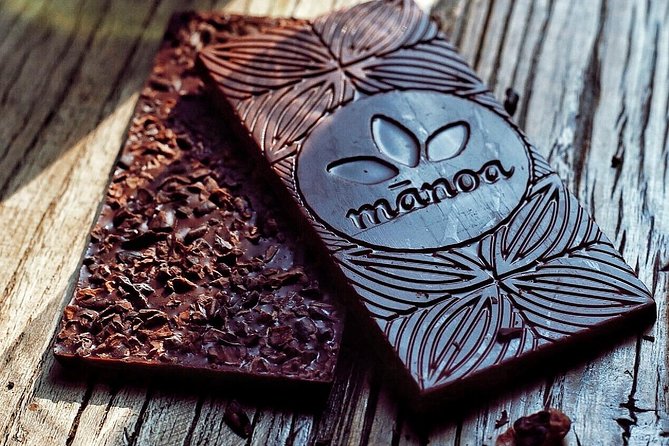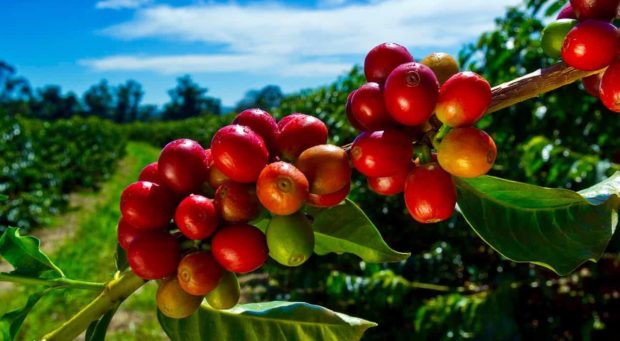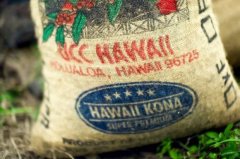Hawaii Kona Coffee History Story Kona Coffee Food how about Chocolate and Coffee
Kona Coffee is a world-famous coffee that grows only on the slopes of two volcanoes on the big island. The porous and mineral-rich volcanic soil, coupled with often sunny mornings, but cloudy or rainy afternoons, breezes and mild nights give coffee from the big island a unique flavor.
In addition to coffee, there will be other products in every coffee farm. For example, you can taste the local chocolate during the Waialua Estate visit, and the chocolate and coffee match is very natural and perfect. The rich flavor of the coffee adds a good balance to the chocolate, contrasts the silkiness of the chocolate with the smoothness of the coffee and adds extra complexity to the chocolate case!

History:
1: the History of Kona Coffee
The first attempt to grow coffee in Hawaii was attributed to horticultural experimenter Don Francisco de Paula Marin (don Francisco de Paula Marin). Marlin introduced many plant species to the Hawaiian Islands in 1817, but failed to do so for coffee plants.
Samuel Ruggles successfully brought coffee to Hawaii in 1828. Over the next 150 years, coffee replaced the well-known sugar industry and experienced many ups and downs. It's just that in the past few decades, the sugar on the Hawaiian islands has almost disappeared, and the coffee is stronger than ever!
In the following timeline, we highlight important milestones in the history of Kona Coffee. The whole timeline is summed up from the excellent book Acup of Aloha.

1817: Don Francisco de Paula Marin brings the first coffee saplings to Hawaii, but the plants wither.
1828-1860: Samuel Ruggles grows the first coffee in Kona (1928). In the decades that followed, more and more coffee plantations opened, but in the 1850s, difficult times began due to lack of labor, bad weather and pests. In 1860, coffee almost disappeared from the Hawaiian islands.
1873: Henry N. Greenwell was honored at the World Exposition in Vienna for his outstanding Kona coffee. Irrelevant but interesting: this World Expo is widely regarded as a huge failure. It lost the equivalent of $170 million today as a result of the devastating combination of the world's first real international financial crisis and the last cholera epidemic in Vienna. )
1892: Hermann Widemann introduces the "Guatemala" coffee variety from Guatemala to Hawaii. Today, this variety is called "Kona Typica" and is the most popular variety in Hawaii. Coffee production began to pick up.
1899: the price of coffee falls sharply again, almost causing it to disappear from the island.
1917-1918: world War I led to a sharp increase in domestic demand for coffee. Frost in Brazil damaged its coffee crop and led to a world coffee shortage. In Hawaii, the coffee situation is getting better again.
1929: the Great Depression begins. The price of coffee plummeted. A decade after debt continued to rise and coffee prices continued to fall. The dark times of Kona Coffee (and the rest of the United States).
1941-1953: as the United States enters World War II and the army buys coffee, coffee prices rise steadily after the war, helping Hawaii's coffee recover. Another frost in Brazil (1953) supported this, which once again led to a global shortage of coffee.
1960s: coffee rises again in Hawaii with a record harvest. Tourism began to compete with coffee plantations for labor.
1970s: low prices, high costs and labor shortages led to the last mass extinction of Hawaiian coffee.
1980s: coffee prices rebounded again in the mid-1970s, and a new group of coffee farmers rose. Kona Coffee is now regarded as a "specialty coffee" and is beginning to attract more and more fans.
Introduction of 10% Kona coffee blending regulation (HRS 486-120.6) (full text). The law allows mixed coffee with only 10% Kona coffee to be marked as "10% Kona coffee".
Important Notice :
前街咖啡 FrontStreet Coffee has moved to new addredd:
FrontStreet Coffee Address: 315,Donghua East Road,GuangZhou
Tel:020 38364473
- Prev

Starbucks Guatemala Antigua Coffee Bean Packaging moral Story Getchal Guatemala National Bird
Gurchal is sacred in Mayan culture, and the tail feather is highly valued and used for trade, but it is forbidden to kill Gechar. Gechar is also the name of the Guatemalan currency, and this bird appears on every banknote. I also noticed that when I finished drinking coffee a few days ago, there was Getchal on Starbucks' Antigua coffee bag in Guatemala, which shows that Starbucks is still careful in packaging design.
- Next

Kona, why is coffee so expensive? Coffee Bean Cup Test report of Queens Manor, Hawaii for three reasons
Compared with other coffee, Hawaiian coffee is relatively expensive. The main reason for this is labour costs: coffee picking is a very labour-intensive process, and farm workers in Hawaii are paid much more than farmers in Guatemala or Ethiopia (which is a good reminder to buy fair-trade coffee as much as possible). As this coffee farmer from Oshima
Related
- Detailed explanation of Jadeite planting Land in Panamanian Jadeite Manor introduction to the grading system of Jadeite competitive bidding, Red bid, Green bid and Rose Summer
- Story of Coffee planting in Brenka region of Costa Rica Stonehenge Manor anaerobic heavy honey treatment of flavor mouth
- What's on the barrel of Blue Mountain Coffee beans?
- Can American coffee also pull flowers? How to use hot American style to pull out a good-looking pattern?
- Can you make a cold extract with coffee beans? What is the right proportion for cold-extracted coffee formula?
- Indonesian PWN Gold Mandrine Coffee Origin Features Flavor How to Chong? Mandolin coffee is American.
- A brief introduction to the flavor characteristics of Brazilian yellow bourbon coffee beans
- What is the effect of different water quality on the flavor of cold-extracted coffee? What kind of water is best for brewing coffee?
- Why do you think of Rose Summer whenever you mention Panamanian coffee?
- Introduction to the characteristics of authentic blue mountain coffee bean producing areas? What is the CIB Coffee Authority in Jamaica?

